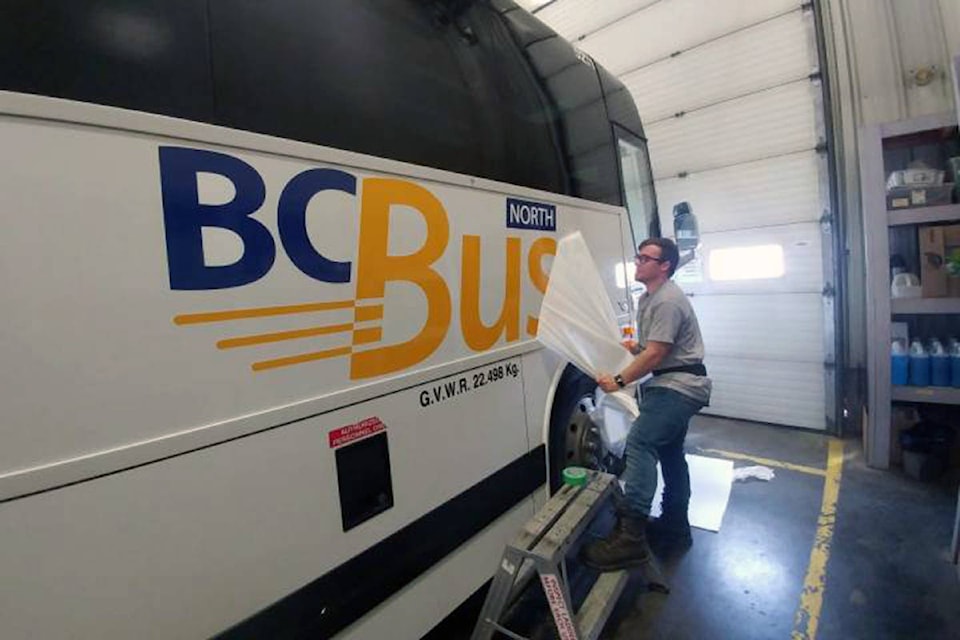Greyhound’s withdrawal of bus service from northern B.C. and the Yukon, effective May 31, will leave a major gap in the territory’s transportation network.
To travel Outside, Yukoners will now need either a plane ticket or access to a private vehicle. While air travel to and within the territory is more competitive and affordable than ever, and ridesharing, facilitated by Facebook, and to a lesser extent, the YG’s own ridesharing website, both modes leave something to be desired in terms of cost and reliability.
In short, air travel is still expensive for many Yukoners, particularly those in the communities, where that extra trip to Whitehorse for a southbound flight adds both time and cost.
Rides, generally at the cost of a few bucks for gas, can be found. But they operate on a luck-of-the draw basis, and the smaller a community you’re from, the less luck you’re likely to have. And for those of us who aren’t big, burly dudes, the prospect of getting into a car with a stranger may not always feel like the safest option.
That’s why, despite its reluctance, the Yukon government should consider launching or funding bus service both within the territory and Outside.
B.C.’s government is already stepping in to replace, at least in part, the service Greyhound is withdrawing. Black Press Media reports BC Transit will launch weekly service connecting Dawson Creek with Prince George and Fort Nelson, two routes on Greyhound’s chopping block. Fares will cost $35 to $45 each way.
The service, to be called BC Bus North, will complement an existing BC Transit route along Highway 16 — the Highway of Tears, where at least 18 women have gone missing — between Prince George and Prince Rupert. (The CBC reports Greyhound says that subsidized service effectively put the company out of business on the same route.)
All this follows a similar trend across the country. In Ontario, the number of towns served by Greyhound has plummeted since 1991, according to TVO, and even service between larger centres like Ottawa to Sudbury and Hamilton to Guelph has been slashed. This while the province’s population has grown by more than 30 per cent over the same time.
In the Maritimes, where the population has grown much more slowly, but has aged significantly, the region’s bus company, Acadian Lines, went under in 2012. It was replaced by another operator, Maritime Bus, but with fewer routes, including no service at all to the entire southern third of Nova Scotia.
Last year, Saskatchewan shuttered its long-running publically-owned bus company, cutting off numerous remote and small communities. Some companies have tried to offer replacement services, but they’re mostly charters or shuttle vans. Disability advocates have lambasted the move and there are reports that hitchiking is way up.
“There are dangers out there, particularly in northern, rural, remote settings,” University of Northern British Columbia professor Dr. Jacqueline Holler, who has researched B.C.’s Highway of Tears, told CBC Saskatchewan. “So I think it’s not exaggerated to say, if you take away bus service and you put people out on the highway hitchhiking, you could see some really devastating impacts.”
The number of people who must travel to the capital for healthcare and other government services would likely make such a system viable, even if it is unlikely to turn a profit.
It’s important to note that the Yukon government would not necessarily have to run the service itself. It could simply set routes, schedules and fares, and contract the service out to an operator.
BC Bus North will run a weekly round-trip between Fort Nelson and Fort St. John. A weekly service could connect Whitehorse and Watson Lake with B.C.’s bus system, while more frequent service could connect the communities with Whitehorse.
Premier Sandy Silver’s government is fond of saying it wants to get out of “the business of doing business.” But is intercity bus transportation even a viable business any more? It’s clear that in the Yukon and northern B.C. it cannot be run profitably. That’s no surprise, give the small populations and long distances here. In some ways, it’s amazing Greyhound lasted as long as it did.
But the lack of a profitable business case is not the same as a lack of need. More people would like to live without owning a car. That should be possible not only in Whitehorse, but in all communities. The Liard First Nation sees the need for this kind of service. The CBC reported LFN will be launching a shuttle of its own in the coming weeks. That shows the need is real. Should it really fall to First Nations to take this up on their own?
Not only that, the incoming carbon tax is about to increase the cost of driving, starting at 2.3 cents per litre of gas, rising to more than 11 cents per litre by 2022. The whole point of carbon pricing is to encourage people to shift to less polluting forms of transportation. In much of the Yukon, there is no alternative. The government is morally obliged to provide one.
Highways and Public Works Minister Richard Mostyn this week once again flatly ruled out any interest in getting into public transportation. That is a mistake.
Everyone needs transportation. Not everyone can drive. A barebones, public bus system shouldn’t be considered a luxury, but a vital link for the communities.
Contact Chris Windeyer at editor@yukon-news.com
